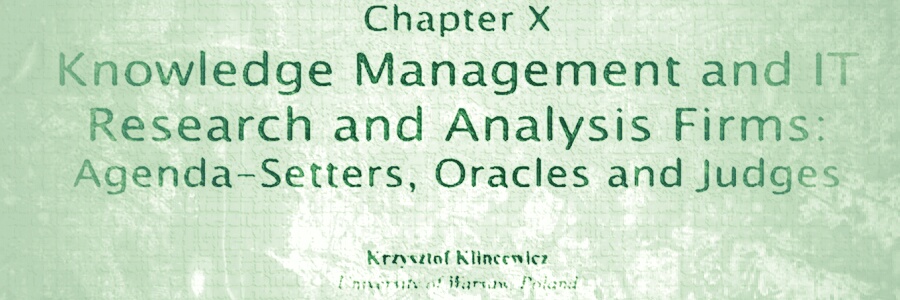Krzysztof Klincewicz argued that IT research & analysis (IT R&A) firms are modern-day truth-tellers, determining the fates of technology products and companies.
He used a sample of reports by Gartner, the famous international analyst company, to conduct a comprehensive qualitative content analysis of the reports and research notes. As it turned out, the analysts assume three predominant roles. First of all, they can be “agenda-setters”, focusing the public discourse on selected issues so that readers do not necessarily know what to think, but they certainly know what to think about. Secondly, they are “oracles”, offering intentionally ambiguous messages and resorting to framing techniques to account for own failed interpretations from the past. Thirdly, they act as “judges”, selecting concepts, technologies and vendors and outlining the “necessary” elements of technological solutions, which are afterwards regarded as de facto standards.
These roles are attractive sources of revenues for IT R&A firms, but at the same time, they draw criticism of the technological community. Popular tools such as Gartner’s hype cycle model or magical quadrant, as well as market size forecasts were presented as examples of communication techniques, presented as objective, technical data, but actually imposing interpretive schemes on the IT market and sometimes crossing the line between product advertising and seemingly independent analysis. This influence was described as the “waterfall” model, with IT R&A publications summarized and interpreted by the specialist media, and subsequently influencing the technology vendors (including their promotional literature and product positioning), and finally shaping the awareness and purchasing criteria of the end customers. The controversial research was linked to the theory of management fashions, mass communication research and the psychological concept of framing.


